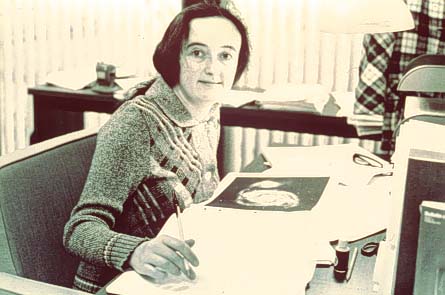In a total of forty years of life, Beatrice Tinsley managed to shape everything we know today about the expansion of the universe and the evolution of galaxies

Beatrice Tinsley Beatrice Tinsley (born on January 27, 1941 and died on March 23, 1981) was a New Zealand astronomer and cosmologist whose research was the fundamental contribution to the astronomical understanding of how galaxies developed.
Teasley was born in Chester, England and was the middle of three sisters. She immigrated to New Zealand with her family following World War II. The family lived first in Christchurch and then in New Plymouth. Her father served in public positions and was even mayor.
While studying in Christchurch she married the physicist and fellow student Brian Tinsley, not knowing that this would prevent her from working at the university as long as he worked there. In 1963 they moved to The Dalles, Texas but there too they encountered the same problem. In 1974, after years of trying to balance home, family and two careers that require a lot of travel, she left her husband and adopted two children. She moved to work as an assistant professor at Yale University, where she worked until her death from cancer in 1981.
Tinsley received her doctorate from the University of Texas in 1966 for her work on the evolution of galaxies and the cosmological significance of this process. She completed the pioneering research on star populations of different ages and the effect of the observed properties on galaxies. She also collaborated on basic research in models that investigated whether the universe is open or closed. Her galaxy model led to the first estimate of what a proto-galaxy looks like.
In 1974, she received the American Astronomical Society's Annie Cannon Award for "groundbreaking research by a woman" in recognition of her work on galaxy evolution.
In 1977, together with Richard Larson, she organized a conference at Yale about the evolution of galaxies and star populations, shortly after that she became a professor of astronomy at Yale University. Her last scientific paper submitted to the Astrophysical Journal just days before her death was published in November of that year without peer review.
After her death, in 1986, the American Astronomical Society established the Beatrice Tinsley Award, which can be given for extraordinary advancement in astronomy or astrophysics or for particularly innovative or creative people. It is the only American Astronomical Society award named after a woman.
Asteroid 3087 Beatrice Tinsley was discovered in 1981 at the Mount John Observatory near Takpo, and is named after her.
In 1929, the astronomer Edwin Hubble studied distant galaxies and discovered that they are moving away from us. Hubble calculated what later became Hubble's constant - defining the relationship between the galaxy's speed and its distance from us. The first value to determine this was 550 kilometers per second per megafarsec.
Hubble's successor Alan Sandge collected data in the early sixties that showed that the universe is expanding faster and he measured the redshift and found that it was greater than 0.5. By observing the brightest stars in galaxy clusters, he determined what is known today as "standard candles" - a method that is still used today to calculate distances to distant galaxies.
Alan Dressler said that this ensures that the fate of the universe will be anything but collapse. When Tinsley challenged Sandge's argument that the brightest galaxies in any galaxy cluster have the same luminosity and all that differentiates them in visible light intensity is distance.
"I was happy that I stumbled upon a fruitful line of research and that I got interesting results so quickly. Of course, this needs to be approved by the other members of the group, including the birdwatcher de vocolor who doesn't think anyone should get a doctorate in less than five years, no matter what he discovered. I had to sell him something - many quotes from his articles," she said in 1966.
Her colleague Robert Kennicott described Tinsley's method as "practically built from scratch." "She created almost everything we use in modern astrophysics. The method of modeling the evolution of galaxies with the aim of discovering their chemical composition, luminosity, colors and gas content as a function of time and applying these models to basic astronomical problems, including those determining the age and configuration of the universe as a whole."
Five things you didn't know about Beatrice Tinlacey on the Independent website
More of the topic in Hayadan:

3 תגובות
We have to do some justice to things
The one who discovered the expansion of the universe was an astronomer named Westo Melvin Sleeper who worked at Percival Lovell's observatory, and studied the Doppler effect in galaxies. In 1914 he even lectured before the American Astronomical Society and showed that out of 16 galaxies he examined only one - Andromeda, is approaching us and all the others are moving away. All the members of the association rose to their feet and gave him a long cheer. Hubble heard about Sleeper, asked him for the data he measured, and got it, added his own data and that of others and wrote a book in which he stated that the universe is expanding. World fame turned to grief.
That's what it is.
Please respond gently
Yehuda
How come we didn't know about her until today?
Angry